Pastiera Napoletana
In honor of National Pi Day, my first attempt at the classic Neapolitan Easter dessert
If you read last week’s post, you’ll know that my nostalgia for Iaciofano family Easter eatables transformed into a personal challenge. After being tormented for years by my mom’s Pastiera Napoletana, I decided that I needed to make the pie myself to see if it was as terrible as I had experienced.
A disclaimer before I begin: my mom reads this newsletter and is completely aware of my dislike for her version of the pie. As of right now, we are still speaking and she has even contributed to the taste testing.
In the spirit of science, I began with research. First, I compared recipes from various blog posts. They all said mostly the same thing, but were different enough (add butter to the wheat berries, no don’t do that!) so I pressed on for more information…
…from Youtube of course! Here, I found a how-to video by a pastry chef from a famous restaurant in Naples. You can watch it here.
I watched this video twice in Italian (I can understand enough to figure out a recipe) before I realized there was a video with English subtitles (huzzah!). I watched that one twice more. Here was the Pied Piper I wanted to follow.
What came next was a search for ingredients. I found many of the necessary players on Amazon:
But I still needed sheep’s milk ricotta cheese. If you follow me on Instagram, you’ll know that I had quite a day of NOT finding this cheese, despite visiting all the grocery and cheese stores in my immediate vicinity. You’d think I was asking for sheep’s cheese that had been milked in the dark of the new moon in the house of Aquarius.
Wegman’s to the rescue! Wegman’s not only stocks the cheese (imported from Italy), but the Cheesemonger didn’t even look at me strangely when I asked where they kept it. Yes, thank you, Signore Formaggio, this IS a completely normal request. I bought three of them, just in case.
Now that I had all the ingredients, I proceeded to hem and haw about the proper time to begin this journey. “Pastiera” means “pasta of yesterday”. “Ieri” is the Italian word for “yesterday”. Part of the process is letting this baby sit for a good 24 hours before cracking into to it. This way, the flavors can hang out with each other, be friends, meld. There’s also a fair amount of chilling of pie dough and the two parts of the fillings (wheat berries and ricotta mixtures).
Finally, I just dug in and made the dang thing.
I began with the pasta frolla which is a specific kind of pastry dough. No need to have ice cold butter, as my Neapolitan pastry chef demonstrated. Room temp is fine, as you want to squeeze it through your fingers. Very satisfying, that, I must say.
You can watch the full video preparation here:
I followed the directions as closely as possible. I love to divert from a recipe, but I had never made this before and I think it’s important to learn how a thing should be done before you begin to create spin-offs and artistic interpretations.
There were two instances were I diverted:
I used a 10 inch pan instead of an 8 inch pan. This is because I don’t own an 8 inch pan, and I wasn’t going to buy one for this purpose. The result was that my pie was most likely a bit flatter than one cooked in an 8 inch pan. I think that’s fine.
I had to cook my pie longer than recommended. The indicators of “doneness” for this pie are a golden brown pie crust and a burnt orange cooked custard peeking through the lattice work. The recommended cook time was 55 minutes at 350°F, but it took my pie about 75 minutes to cook completely. I know my oven temperature is accurate because I have a thermometer, so I can only imagine that 55 minutes is for convection. If you make this pie, I suggest you set the timer for 50 minutes and then watch it like a hawk every 5 or 7 minutes after that.
This was how it looked when I finally removed it from the oven:
I was confident I had done it properly. At least it looked right… no idea how it would taste, that was tomorrow’s problem.
While I waited, I entertained myself with various messages from my Instagram followers who had become invested in this journey. They offered encouragement and alternate recipes, which I’d love to try next.
If you have a suggestion, please leave it below!
The next day, I set it up for it’s beauty shot. I cut it open to see what was going on inside. Eureka — it looked good!
I cut the pie into thirds, kept one and distributed one to my mom and the other to my brother for tasting.
Finally, I ate it myself. Here are my findings:
Excellent pastry dough. It’s not flaky, because you don’t use cold butter. Instead, it’s the consistency of a butter cookie. This appeals to me.
The filling was silky-soft. I was told it should feel like a cross between a rice pudding and a pie, and that was achieved. The wheat berries and citron provided something for your teeth to grab onto, while the sheep’s milk ricotta was smooth as mousse. Next time I would either cut the citron into smaller pieces, or blend them with the ricotta. I thought the pieces were a bit large, and I would like them to be more evenly distributed throughout the filling.
The flavor of the filling was slightly sweet and mildly citrusy. The orange blossom water should not be skipped as it adds a delicate floral flavor to the filling that doesn’t overpower. The filling was also just the right amount of sweetness—not cloying, but more like a pastry cream. I would add more lemon and citrus zest next time, as I think it needed a tiny bit of citrus punch. Some recipes also call for ground cinnamon, which could be a welcome spice.
The pastry also held up to the custard. No soggy bottoms as Paul Hollywood would say. I was delighted. I had a slice for dessert on Sunday night, and was pleased. But it was even better with my morning coffee on Monday morning. This pie is a huge win as a breakfast pastry.
In conclusion, 10/10 would both make and eat again. While I’m including the making-of video for you, I want to make this pie once more before I provide my Elana-approved recipe. As I said, there are some revisions I’d like to make that I think will improve flavor and consistency. Given that, I don’t feel right providing you with a recipe that is 90%. Hang in there, it’s coming.
I’m now a Pastiera fan, and the process has inspired me to make more misunderstood family recipes. I plan to dive deep into Iaciofano family history to see what I can come up with. I’ll let you know what’s “in consideration” right after I get this recipe to where I like it...just in time for Easter!


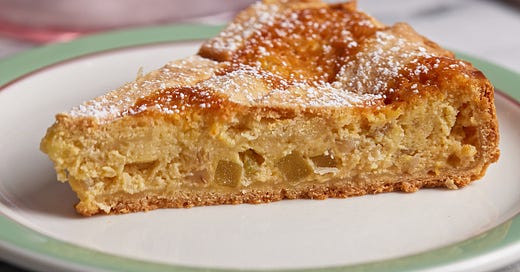


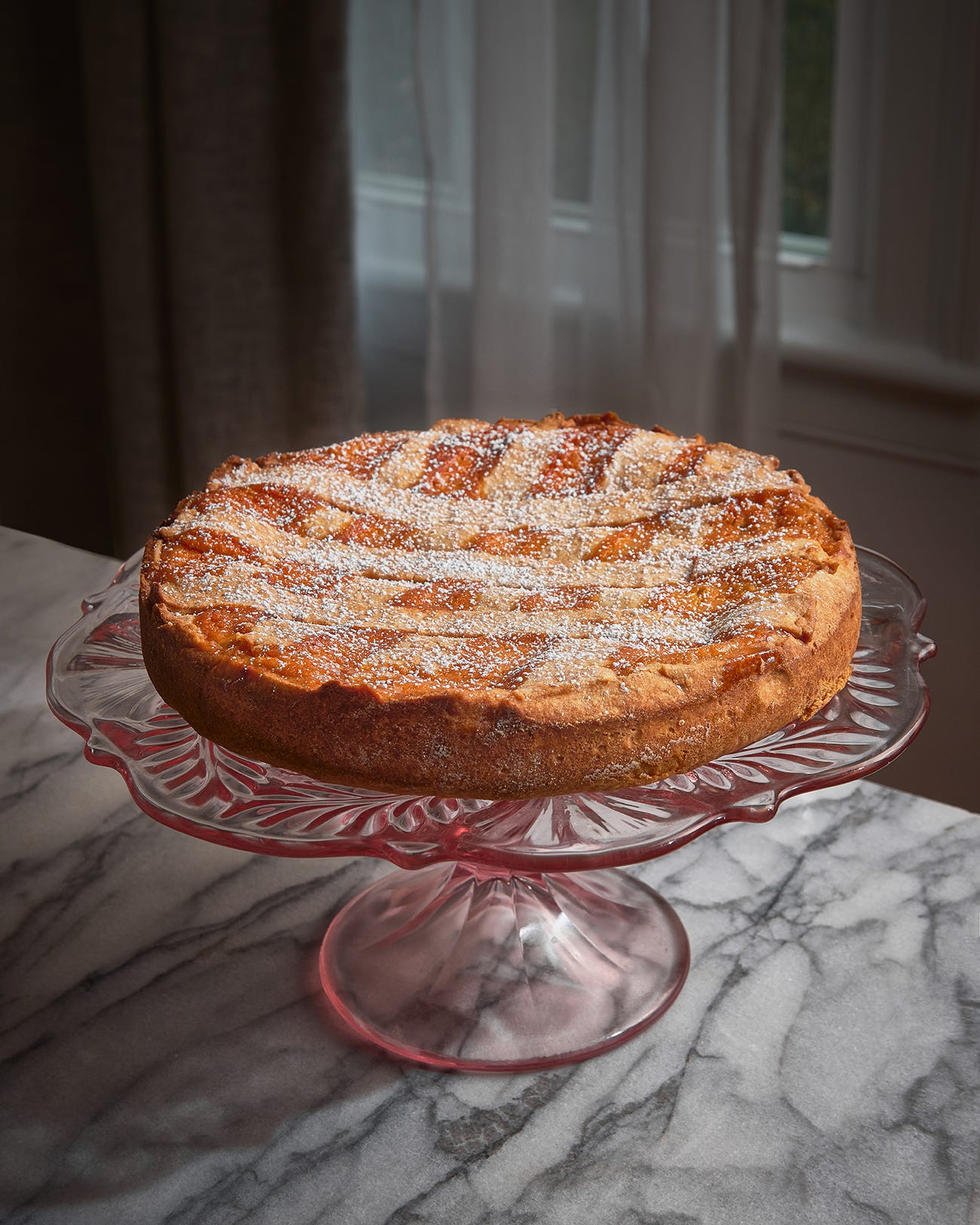
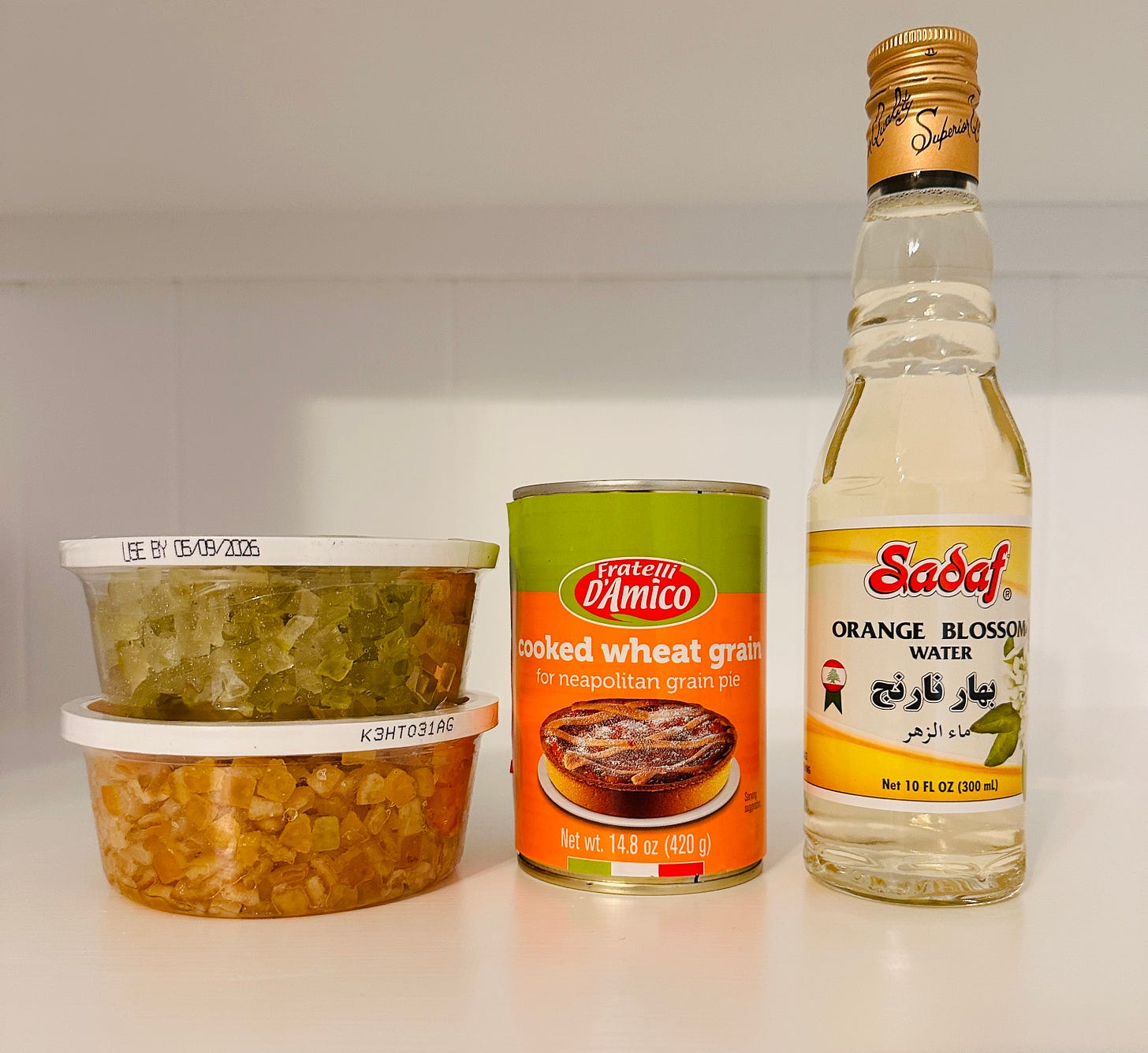
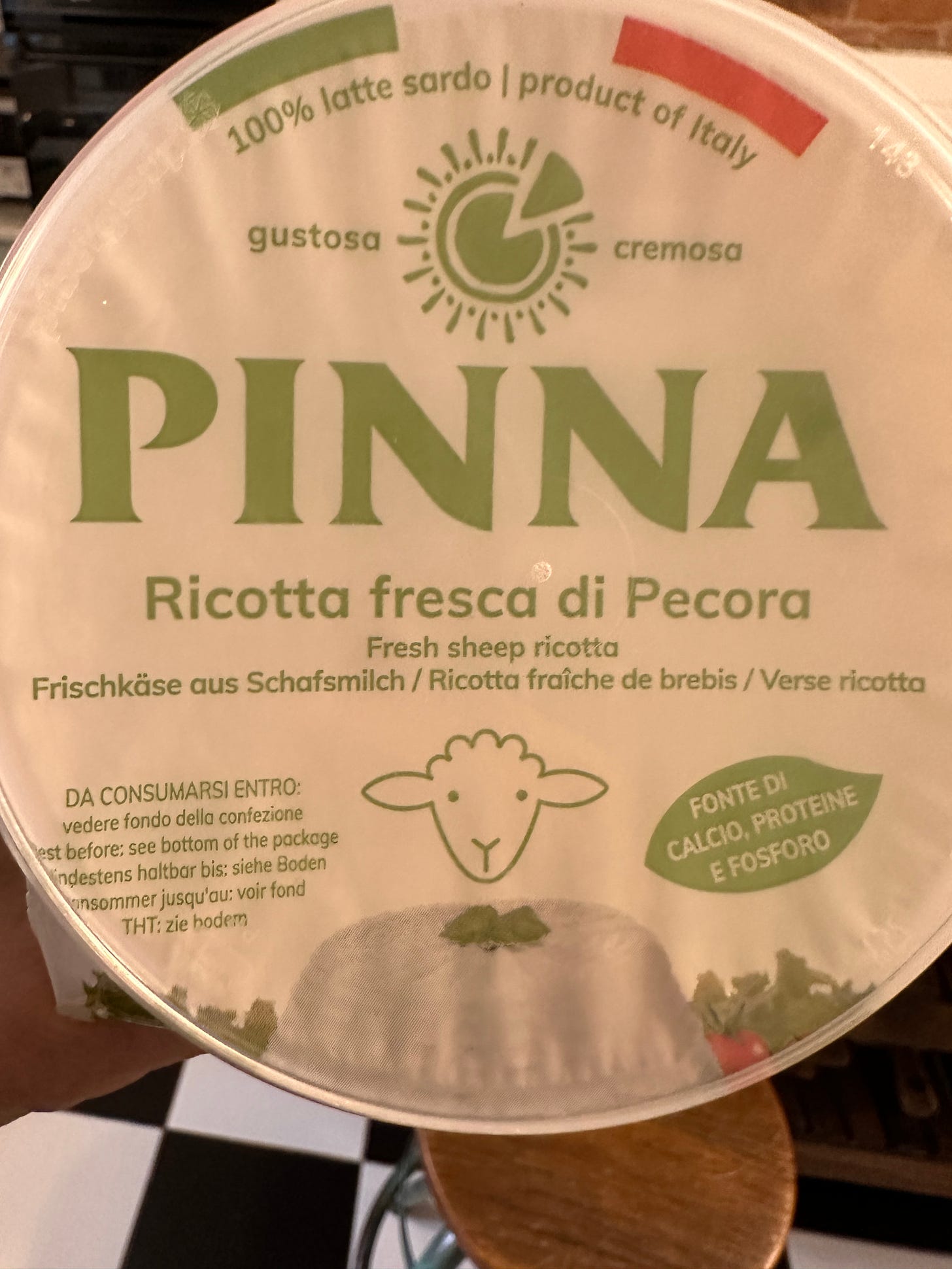
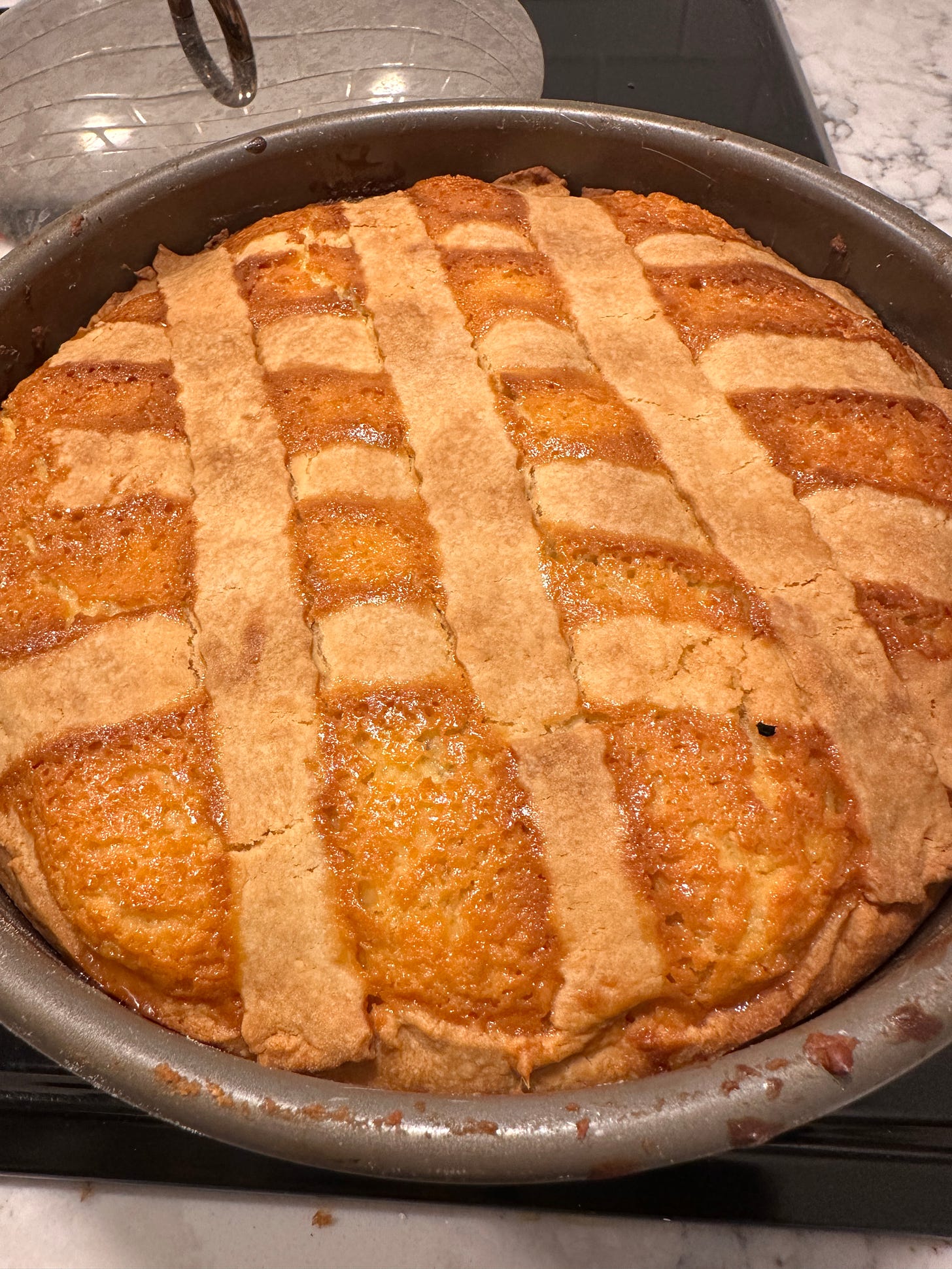


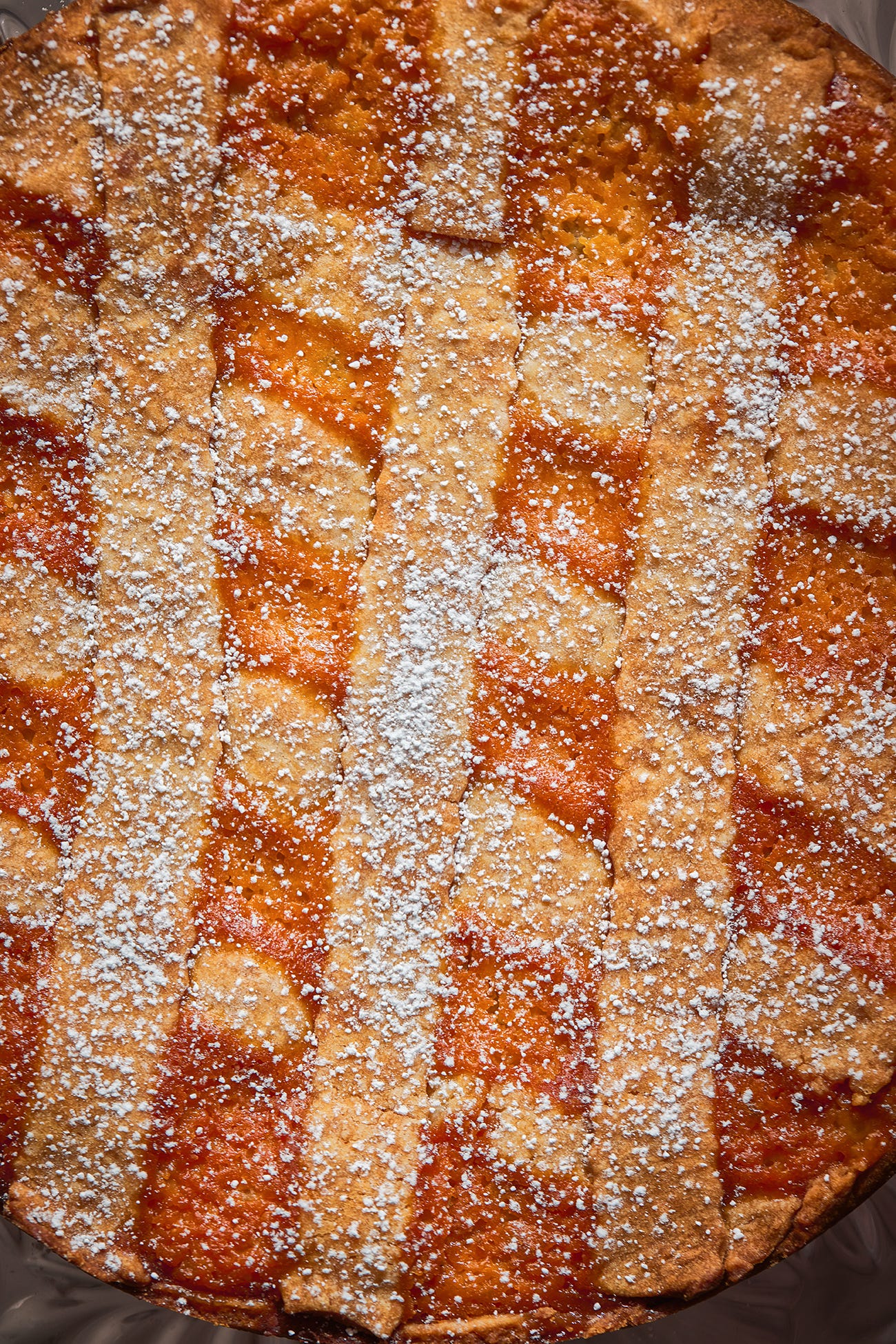
I love being a part of your daily culinary journey - - especially your commentary throughout (it all makes me smile!) Thank you!